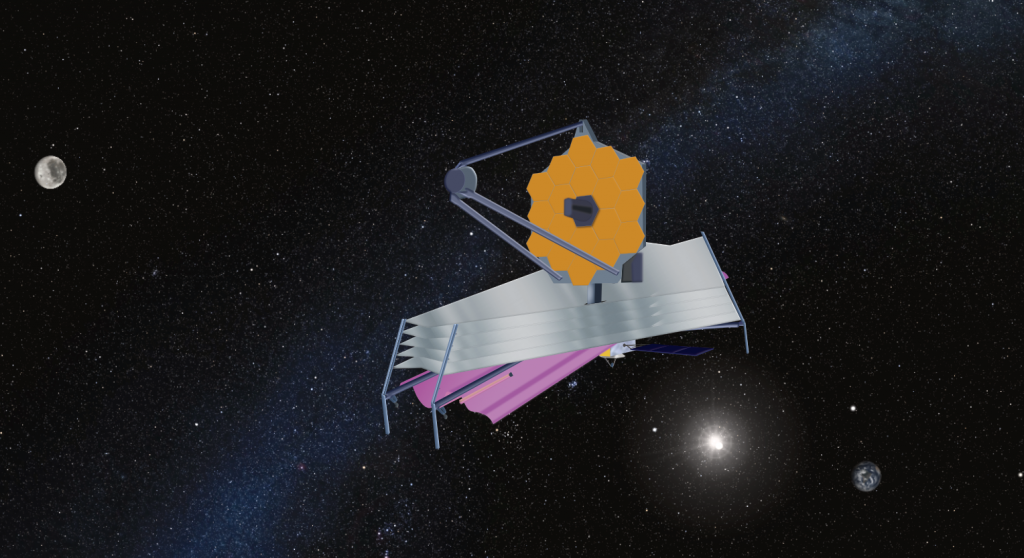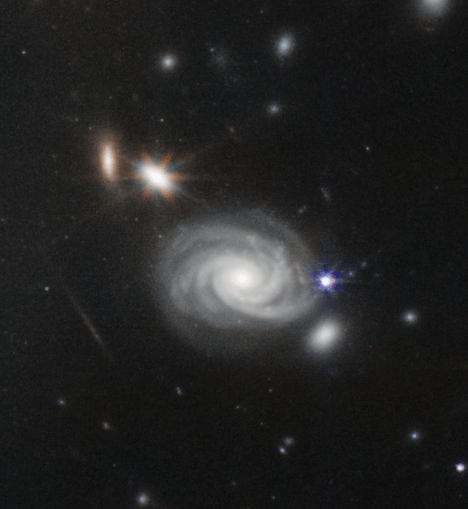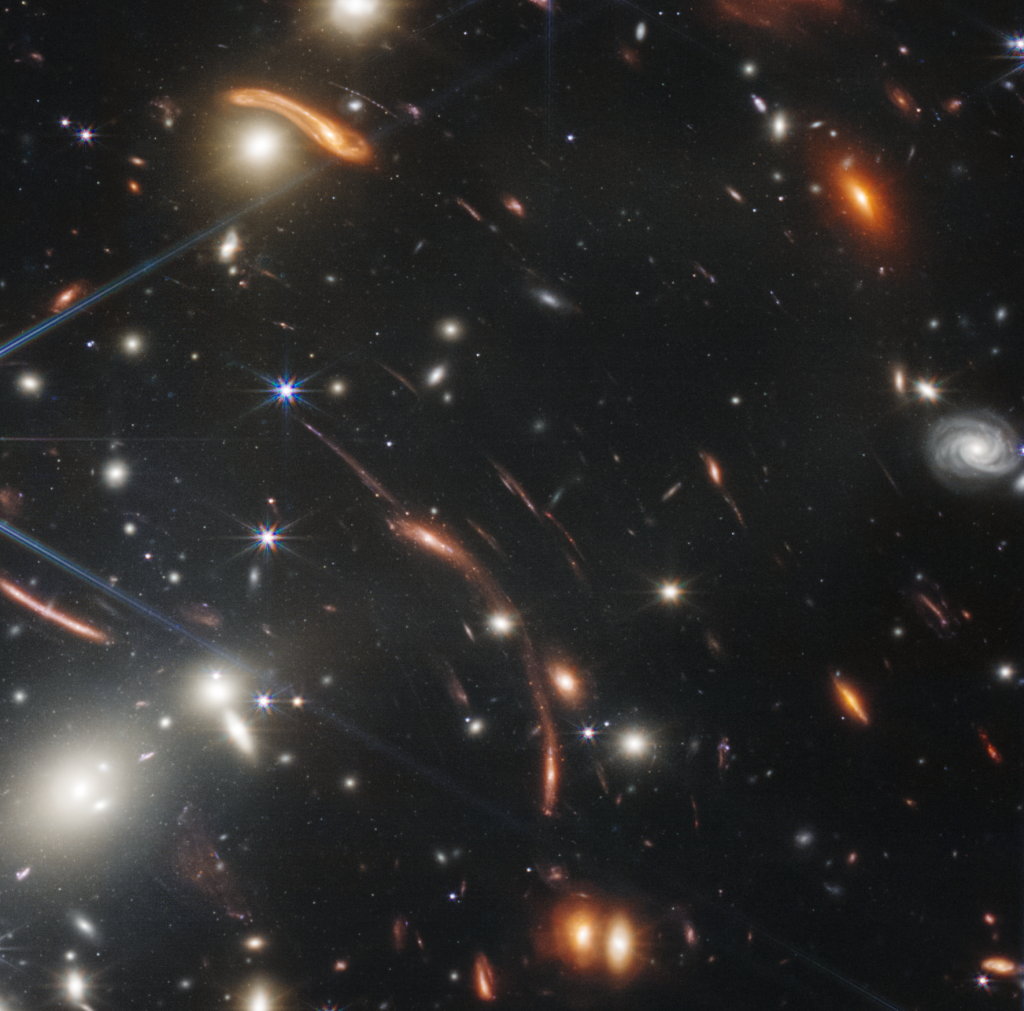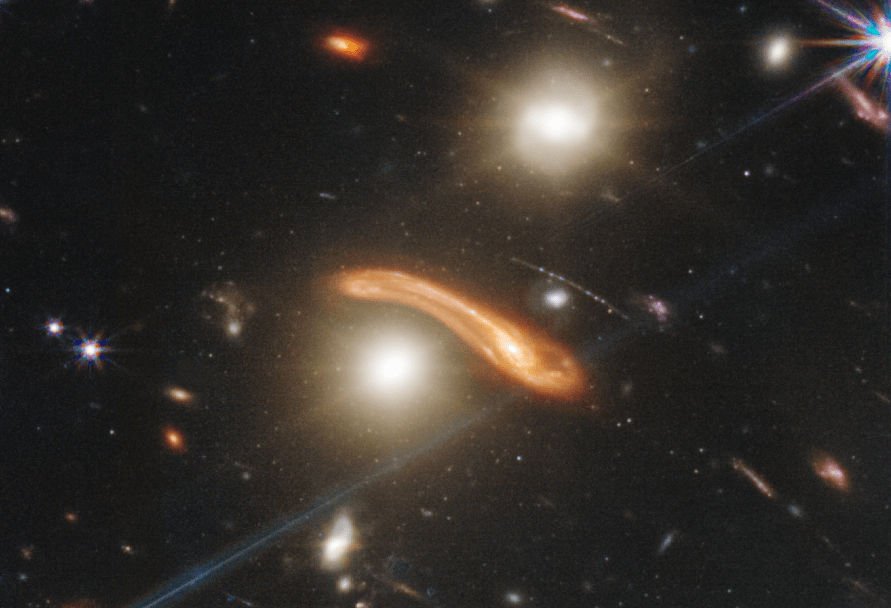After much anticipation, there was a very delayed, frustrating and extremely brief, shambolic and somewhat farcical media presentation to show the first image from The James Webb Space Telescope from The White House on the 11th of July 2022.
No-one who waited for all that time for it to start will forget the earworm that was played for over 45 minutes.
I almost gave up and went to bed, but I’m so glad I persevered.
The much awaited image is below.
So what does it show us?
The image is a very small area of the sky taken by the Near Infra-red Camera NIRCam.
It’s such a tiny field of view, it’s the same size as a grain of sand held at arms length.
We are looking at a galaxy cluster in the southern hemisphere, called SMACS 0723 in the constellation of Volans.
When you see how many hundreds, maybe thousands of faint galaxies there are in this image, multiply that by the rest of the sky.
You’ll then start to get some sort of idea just how many galaxies are out there in the universe.
Each of these galaxies contain billions of stars, many of them bigger than our own Milky Way Galaxy.
I just love this beautifully formed spiral galaxy cropped from this image.
The main galaxy cluster is located 4.6 billion light years from us, so light takes that long to reach us and we are seeing these galaxies as they were 4.6 billion years ago.
We really are looking well back in time, so we are seeing them as they were when our own solar system was being formed.
As if that’s not enough, look a bit closer.
Nestled between the nearest galaxies you can see some elongated curves of light, swirls and strings of light, enlarged below.
These are really faint galaxies lying behind the galaxy cluster and much more remote.
As the distant light passes through the gravitational field of the nearer galaxy cluster it is being diffracted, bending and distorting the light, very much like a lens.
It’s a bit like peering through a full wine glass, where the light from behind is bent and warping the image from behind.
Look at this close crop of a galaxy gravitationally warped to look like a slug, and the wonderful string of pearls just above it.
So bending of the light makes the galaxies appear warped and bent, much like a Salvador Dali painting.
This is known as Gravitational Lensing, or An Einstein’s Ring, after Albert, who was the first person to predict that light could be diffracted by a strong gravitational force.
This effect magnifies those faint more distant galaxies, so that they are visible in the image, when they would normally be too faint to see.
How far away are those more distant galaxies?
Possibly ~13 billion light years away.
So we are seeing very young galaxies as they were in the very, very early years of our universe.
Our Universe is 13.8 billion years old.
I’m sure that there will be multitudes of scientific papers to follow, just from this one single image, which JWST took from only 12.5 hours of exposure.
I for one am very relieved, as it’s an absolutely stunning image and shows just what the JWST is capable of.
Let me put this image into perspective.
We have NEVER seen the universe in this much detail in infra-red before, as JWST enables us to see these distant galaxies light, for the very first time.
Red Shift over this distance has caused the visible light of these galaxies to move into the Infra-red.
The diffraction spikes on the brightest objects aren’t even quite as much of a distraction as I thought they would be from the initial image we saw some weeks ago.
So I will be eagerly awaiting some new images and data today, and for many more years to come.






Beautiful description for a layperson like me Dave, making it more a bit tangible! Thank you.
Cheers Mate. That’s the aim.
Fantastic commentary Dave, what a great image and thanks for explaining what we are seeing. Hope you are doing well. Steve
Cheers Steve.
Doing great thank you.
Hope you are too.
Good clear write up on an incredible Webb photo